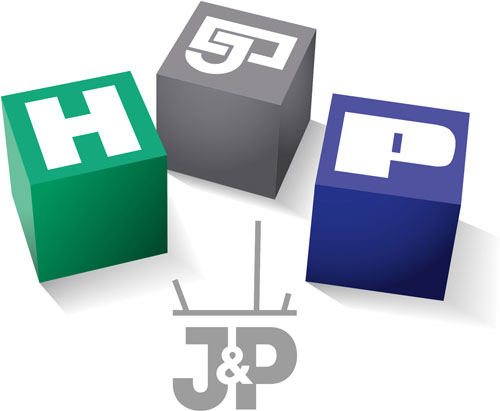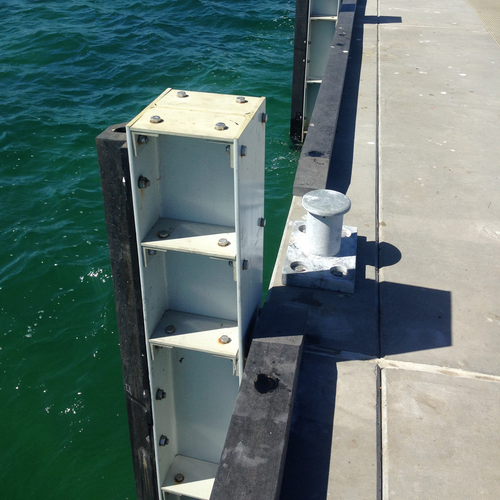Glass-fibre reinforcement has been around for over 30 years. It has successfully replaced traditional steel or stainless steel reinforcement on many projects that have specialist applications. One such application is sea defence structures where high levels of corrosion resistance are required.
In this application and in many others, glass-fibre-reinforced polymer (GFRP) can be used to assist in solving technical issues where standard embedded steel reinforcement would lead to potential issues. Jeremy Wedge of J&P Building Systems and Christoph Spitz ofH-BAU Technik report.
To be effective, the reinforcement design must be developed to integrate GFRP at an early stage and the concrete design must also be considered. An early GFRP design process can lead to whole-life solutions that are cost effective when compared with standard reinforcement solutions and especially as an alternative to stainless steel reinforcement.
However, consideration of the benefits of GFRP to specific projects is often overlooked due to the designer’s familiarity with more traditional solutions, or programme constraints limiting the investigation of alternatives. The general knowledge gap regarding the application of GFRP combined with time pressure on design teams, often means that traditional reinforcement specifications are adopted even though they may prove to be over-complicated and costly. A traditional approach to design solutions can hold back the use of GFRP in concrete design and may restrain beneficial innovation.
Seeing the potential benefits to the design of concrete structures and their longevity, Canada took the lead in many areas of GFRP research some time ago and has subsequently adopted its use widely in concrete structures, including highway and bridge design.
Fibernox V-Rod GFRP reinforcement has been developed over the years within this environment, in use on projects in Canada and Europe over decades. Its modulus of elasticity is 60000MPa and it produces a guaranteed tensile strength of 1000MPa. Canadian CSA Standard classifies the product within the highest classes for durability and mechanical properties. These properties derive from the use of ECR glass fibres and vinyl ester resin in the production of the GFRP reinforcement bars. The customer and designer see the result of this material selection in the form of high performance from the reinforcement over an extended lifetime.
There are several manufacturers of GFRP reinforcement systems on the world market, producing in various countries and at varying quality and performance levels. The designer needs to be aware of the differing performance between brands when selecting a GFRP reinforcement system.
In addition to performance issues, the designer needs to check the range of bar diameters offered by the manufacturer and the availability reinforcement formed to required shapes and bending radii. Forming shapes and bends in GFRP reinforcement is a factory process requiring significant skill from the producer. Forming bars to specific shapes take time and this needs to be planned for in the procurement process. The designer will find that some GFRP suppliers have a limited range of bar diameters and shapes available. Also, there will be different levels of product performance achieved by different suppliers in the shape forming process.
During the design of sea defence and marine structures engineers will often consider stainless steel reinforcement to provide corrosion resistance. Stainless steel is a relatively expensive material for reinforcement and due to the volatile price of stainless steel on the world market unexpected costs can arise. Fibernox V-Rod GFRP bar materials have comparable optimum corrosion/alkali resistance and when used in conjunction with the correct concrete mix design can provide an optimum solution for designs requiring high levels of corrosion resistance. Structural elements can also often be redesigned to reduce concrete cover, with the result that member thickness and weight can also be reduced without compromising durability.
The erosion of coastline is an ongoing concern for designers of coastal infrastructure, due to the aggressive coastal environment. One recent project in Florida used GFRC reinforcement in the reinstatement of sea defences that had succumbed to a severe tidal surge during last year’s hurricane season. The previous sea defence had comprised of steel sheet piles that formed support to the coastal road. During one hurricane the sheet piled wall failed and the road was partly washed away. The proposed design solution for reinstatement was based on a concrete secant piled wall placed between the sea and road. In order to ensure a long maintenance-free design life, the piles were reinforced with GRFP bars instead of steel. Above the piles the top of the wall was finished off with a capping beam that was also reinforced with GRFP bars.
The piled wall comprised of over 1800 piles, each of which used 25 25mm-diameter GRFP bars with helical bars placed along the circumference of the pile to complete the pile cage. This project adopted the Fibernox V-Rod system due to the availability of large bar diameters and ability of the system to form helical shapes. The design team was supported by the manufacturer’s technical team to ensure the development of the specification was right for the application, including the specification of all the concrete elements.
GRFP reinforcement can also provide durable long-term solutions where replacement of other aging marine structures such as sea walls and jetties are required. Sea walls have a particularly aggressive environment with which to contend, increasing the possibility of corrosion in traditional reinforcement. As with many marine structures, jetties have hidden structural elements where dangerous degradation can occur un-noticed, unless they are regularly inspected. Repair and maintenance coupled with the logistics of safe access for inspection can become an ongoing expensive problem for the owners of such infrastructure.
In Australia, GFRP reinforcement has been extensively adopted as part of solutions for the repair and replacement of marine structures. In one recent case, a jetty was rendered unsafe and partially collapsed. The replacement structure was designed adopting GFRP reinforcement in the precast components, to negate the risks of ongoing corrosion within the concrete and to extend the life of the structure.
Other applications that can benefit from the long-life expectancy of glass-fibre reinforcement include external highly trafficked concrete service yards or airfield runways that need long periods between concrete maintenance, because closure would have a direct impact on operations. Vehicle impact on bridge abutments and concrete barriers between central reservations can transfer high design loads into concrete elements. The use of GFRP reinforcement allows designers to produce robust structures that use its corrosion resistant properties to provide a long maintenance-free design life.
Since GFRP reinforcement is not metallic it can also be used in structures that are sensitive to electromagnetic interference. This can be the case with scanning equipment in hospitals, laboratories and airport runways. Recent applications for Fibernox V-Rod include taxiways at Zürich International Airport, military airport runways and the entire slab of Zürich University’s new building for physical sciences.
Clearly there are a range of applications for glass-fibre reinforcement in many types of structure that can provide benefits to both the client and the goals of the designers. In order to unlock the potential of the product the design of not only the reinforcement but also the concrete must be considered early in the design cycle of the project.

